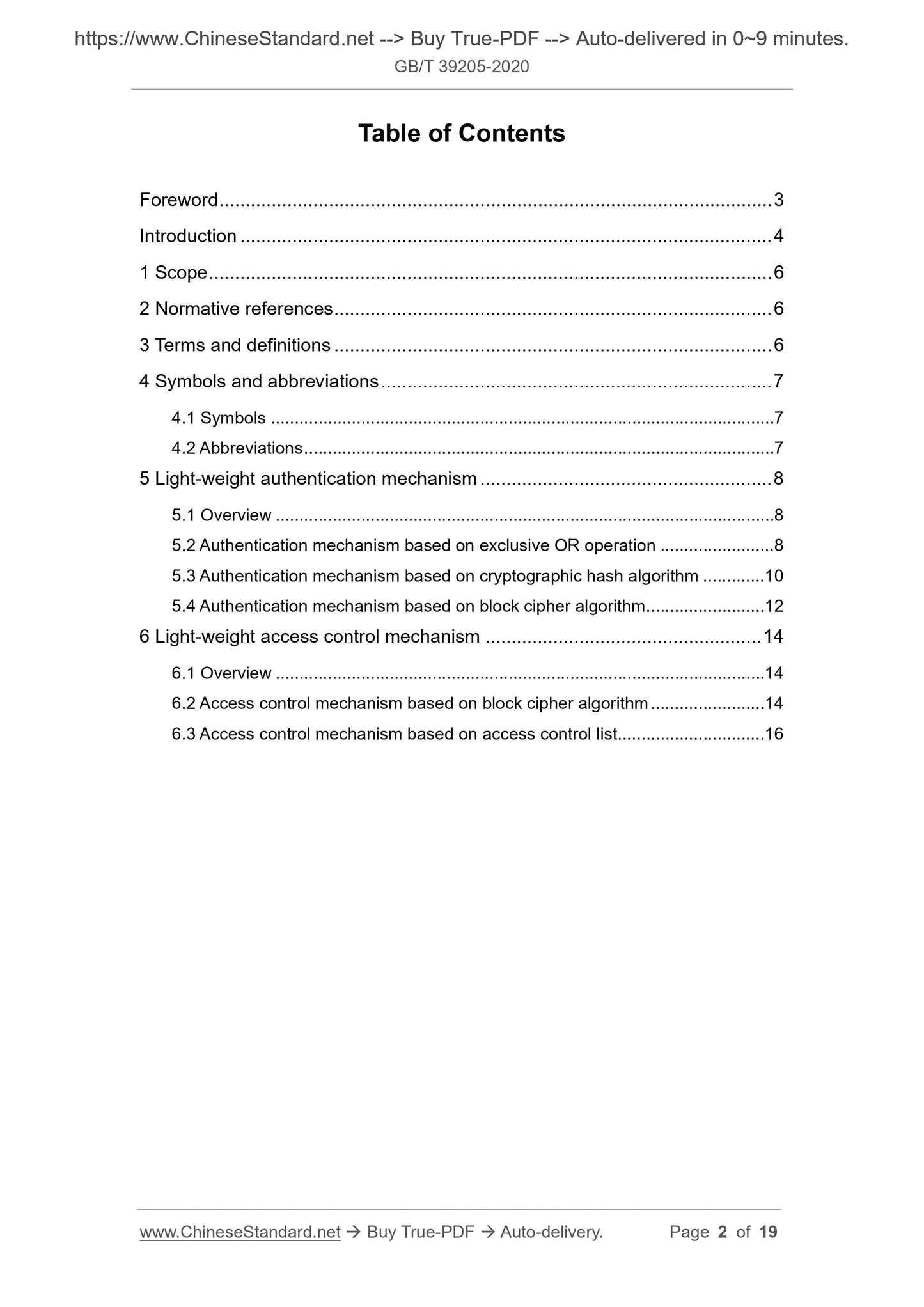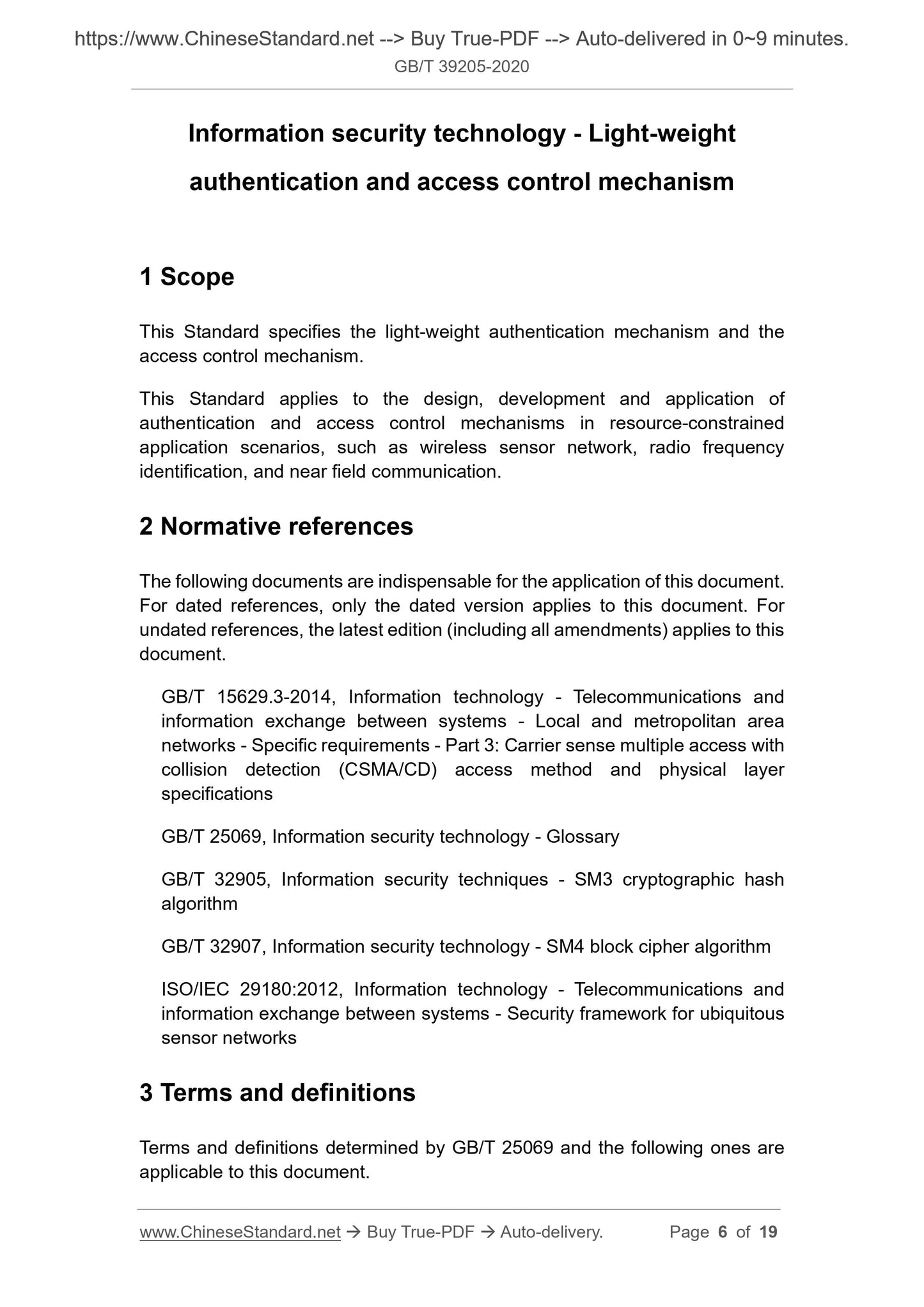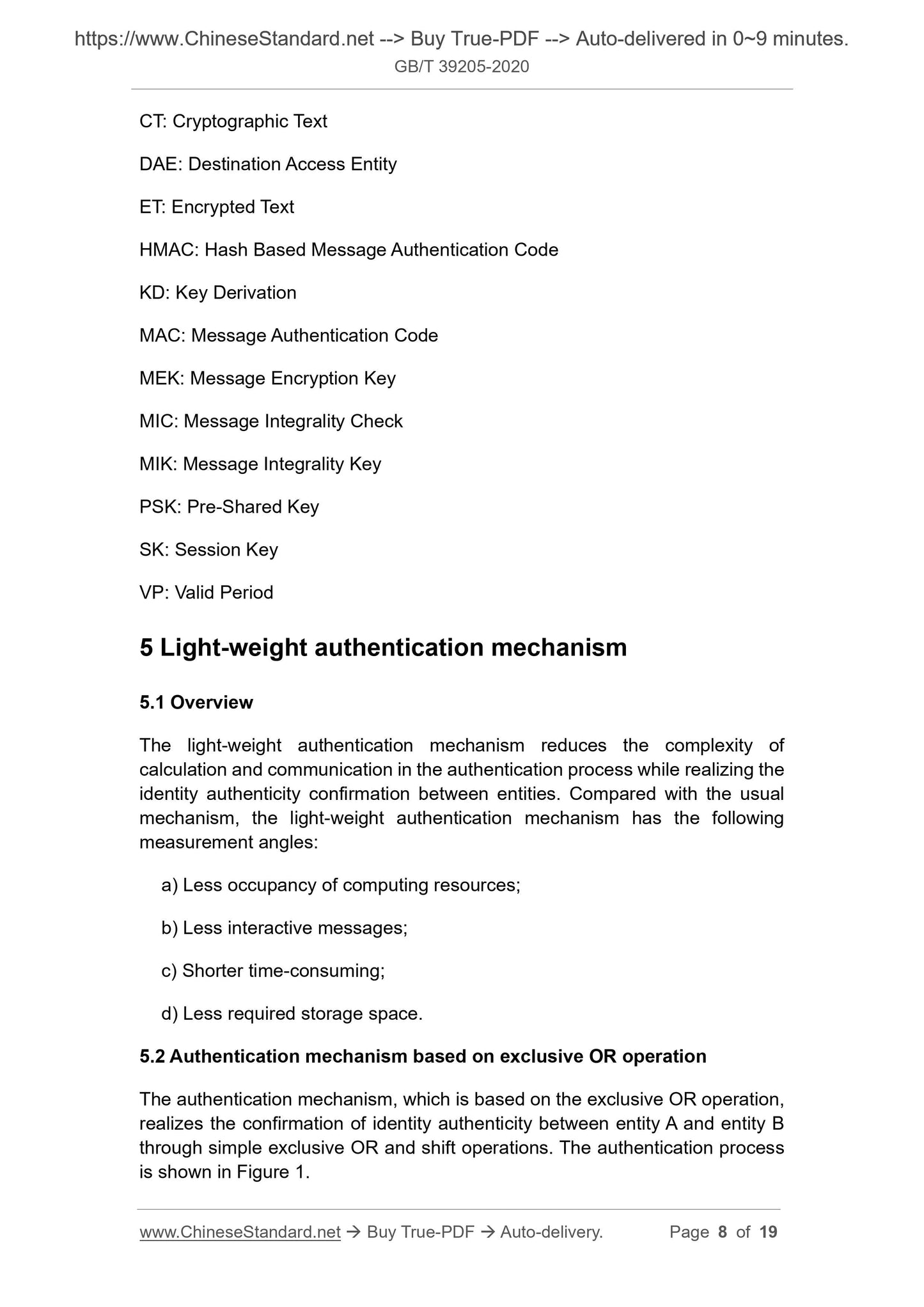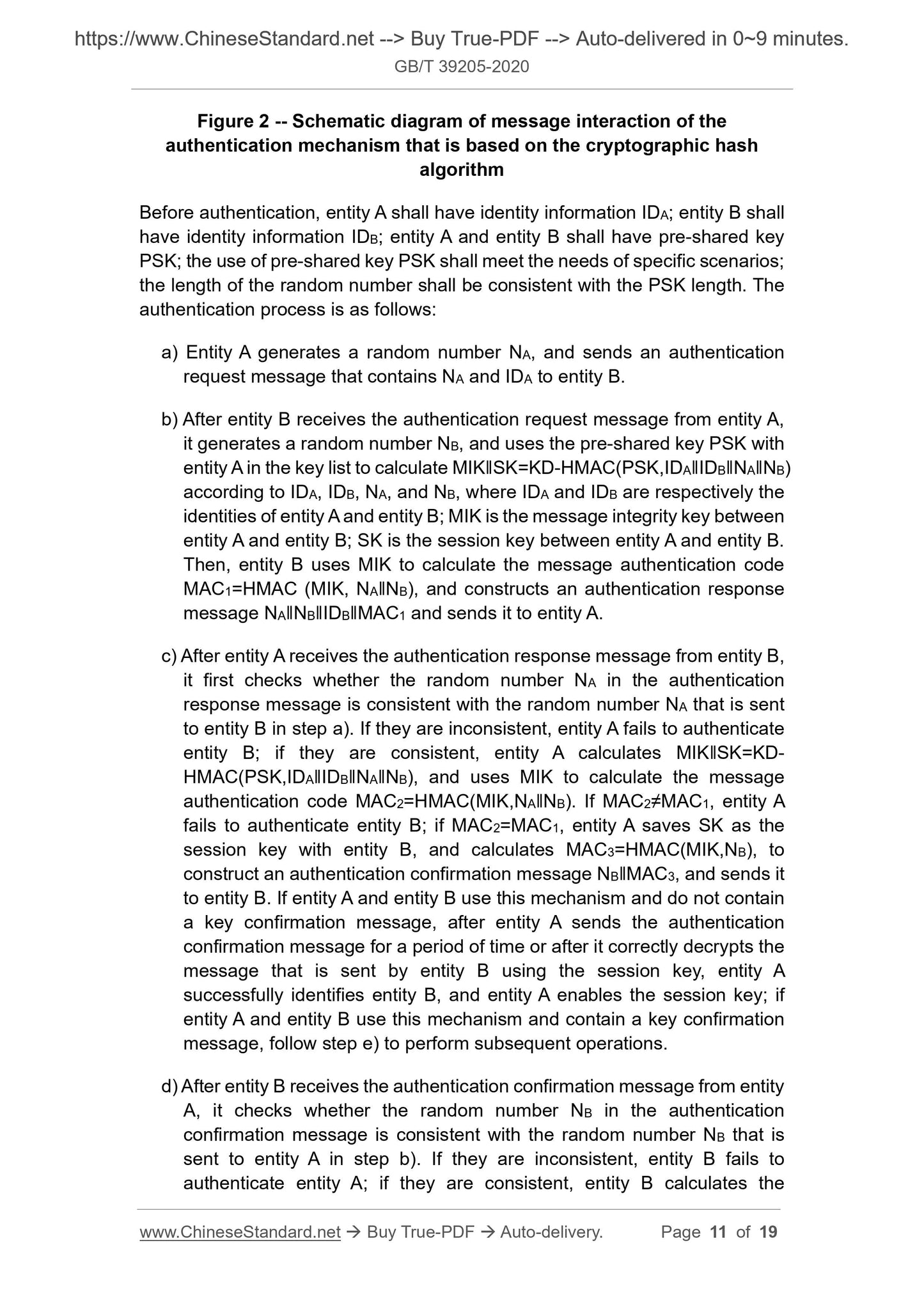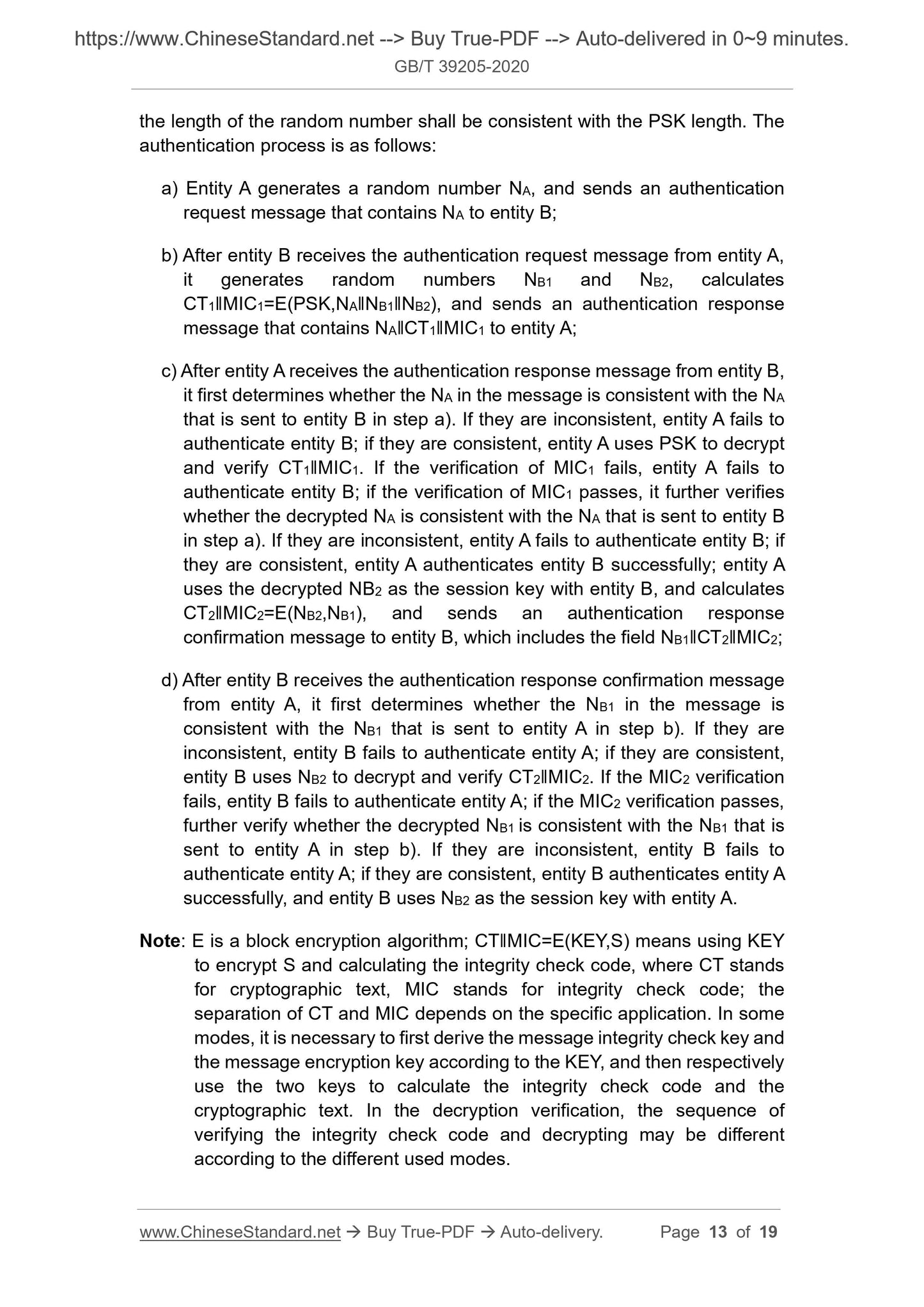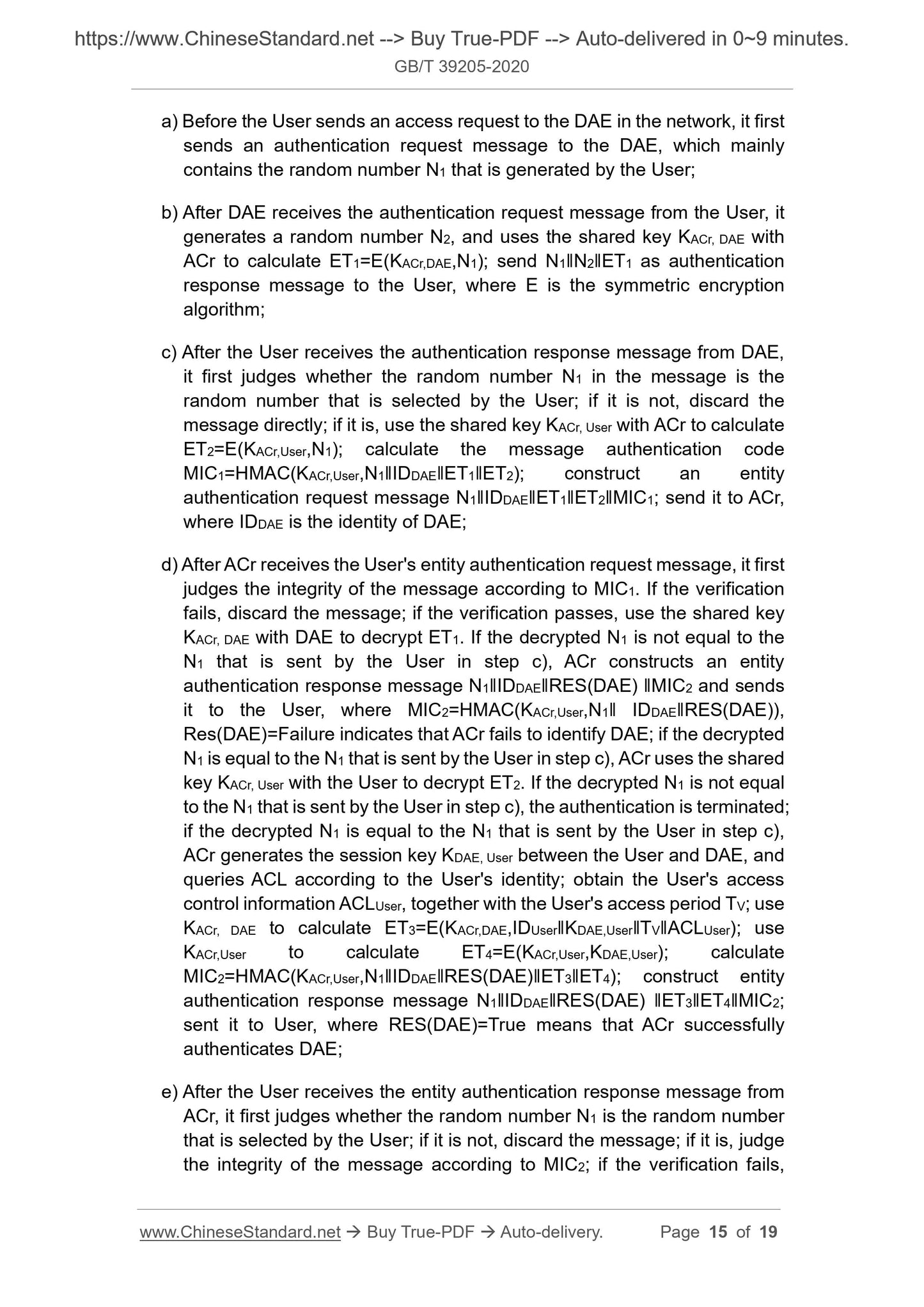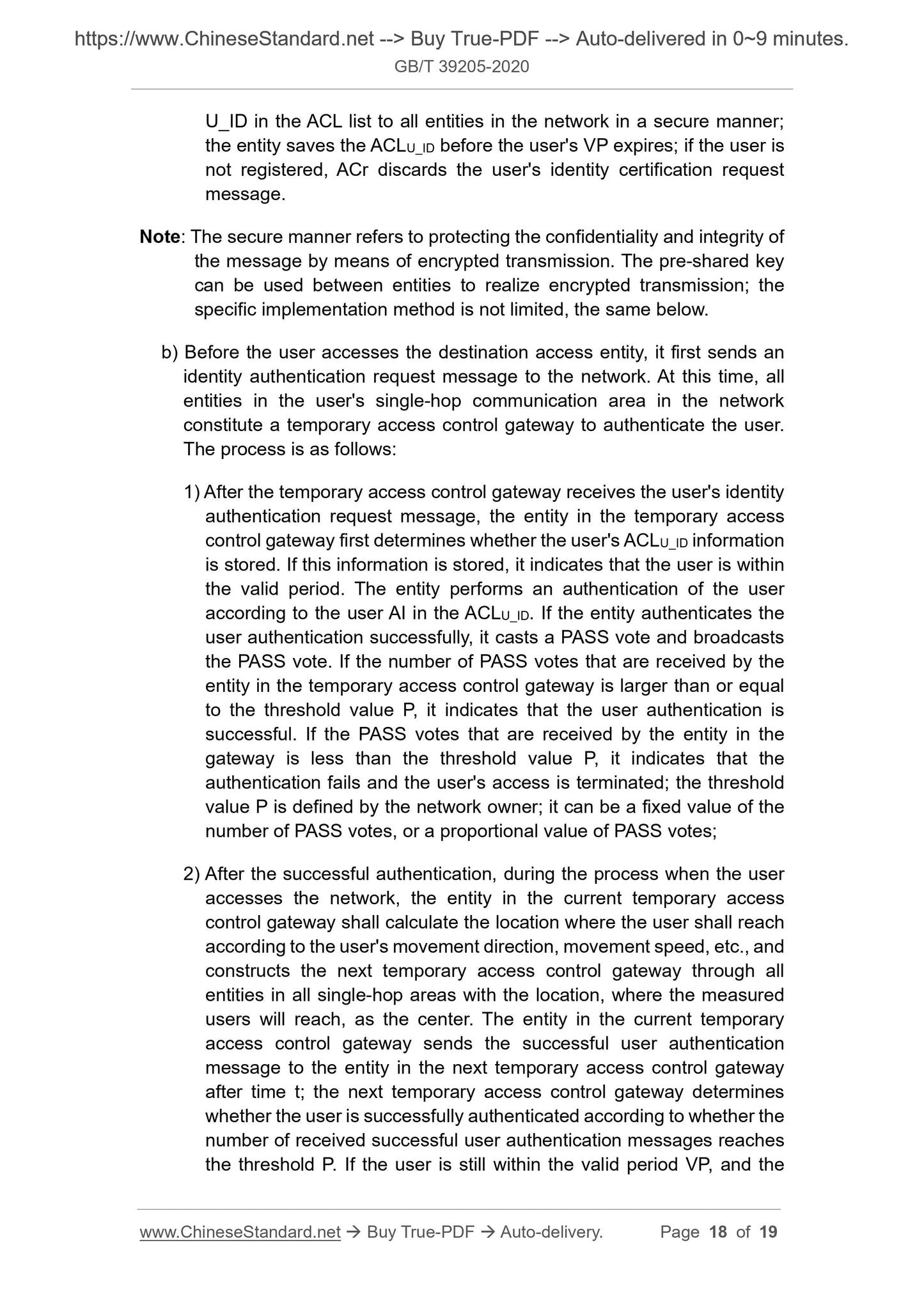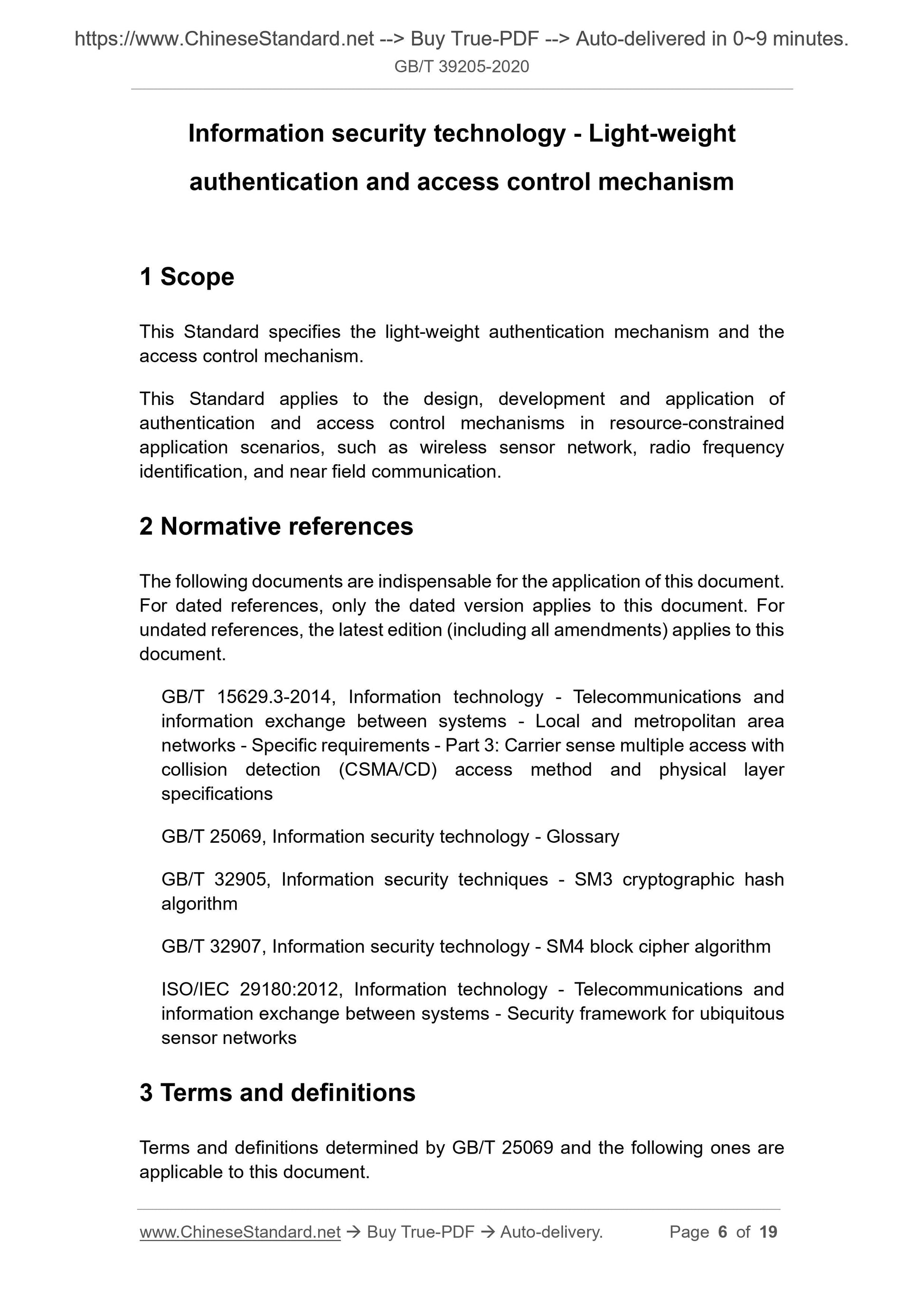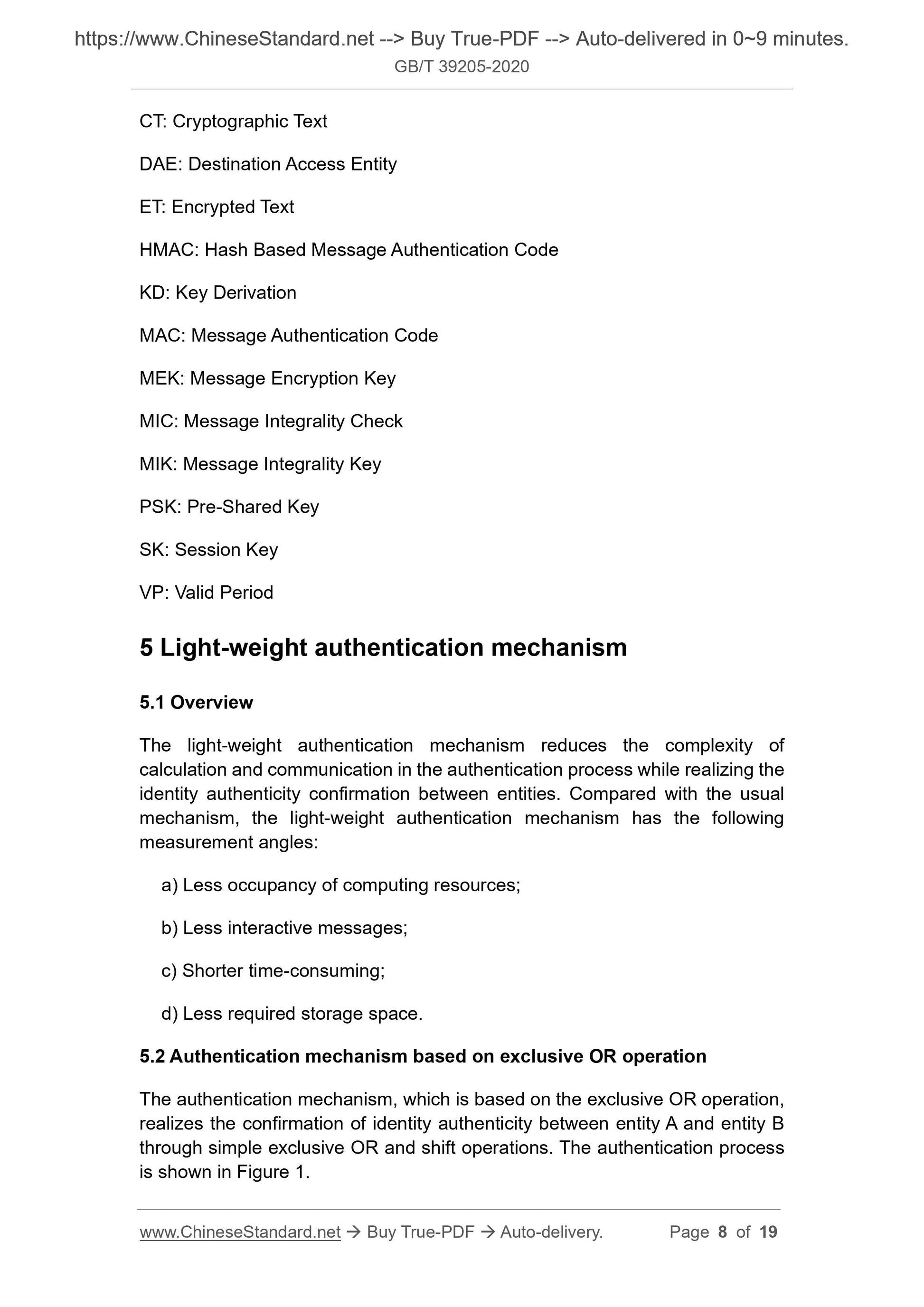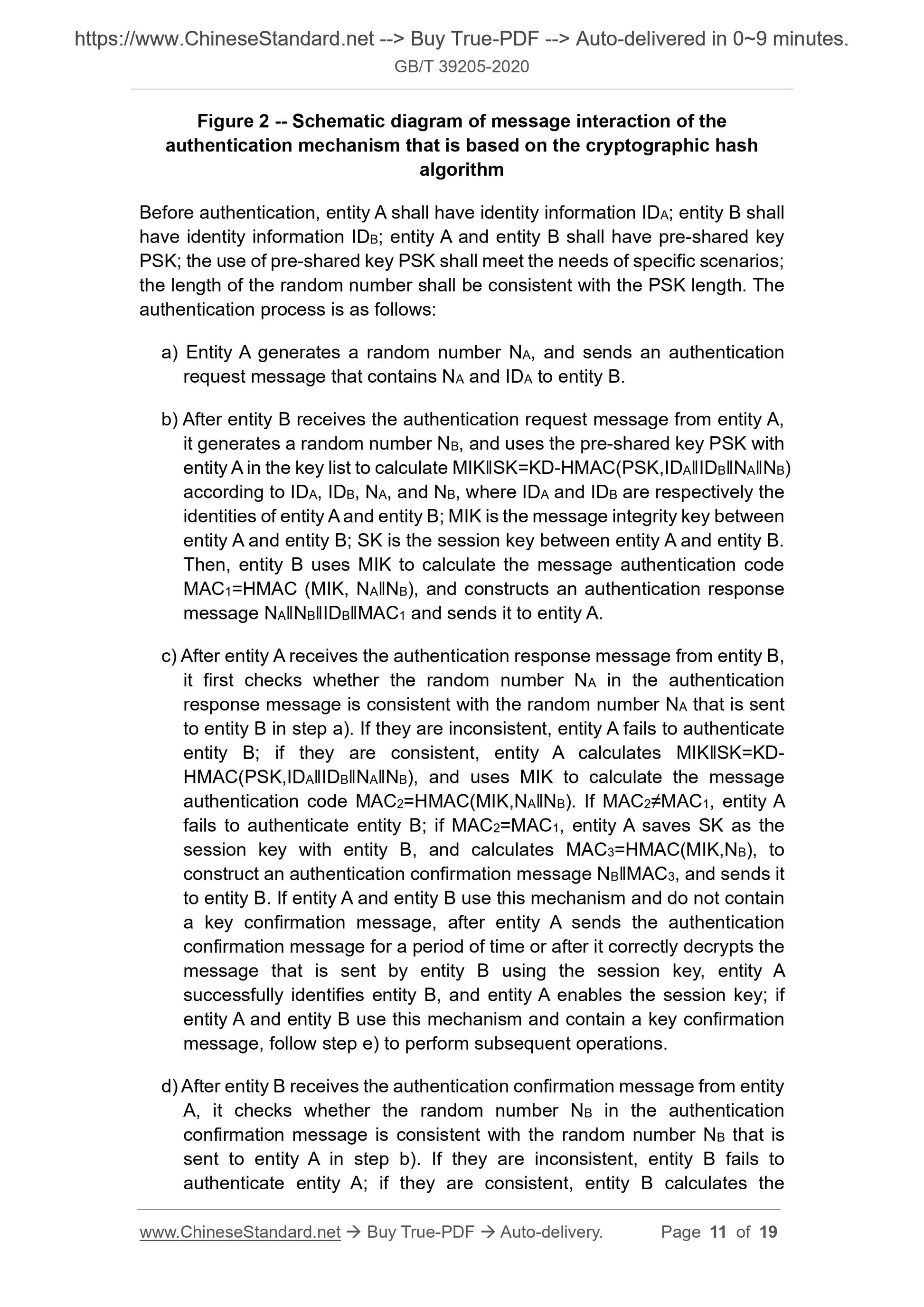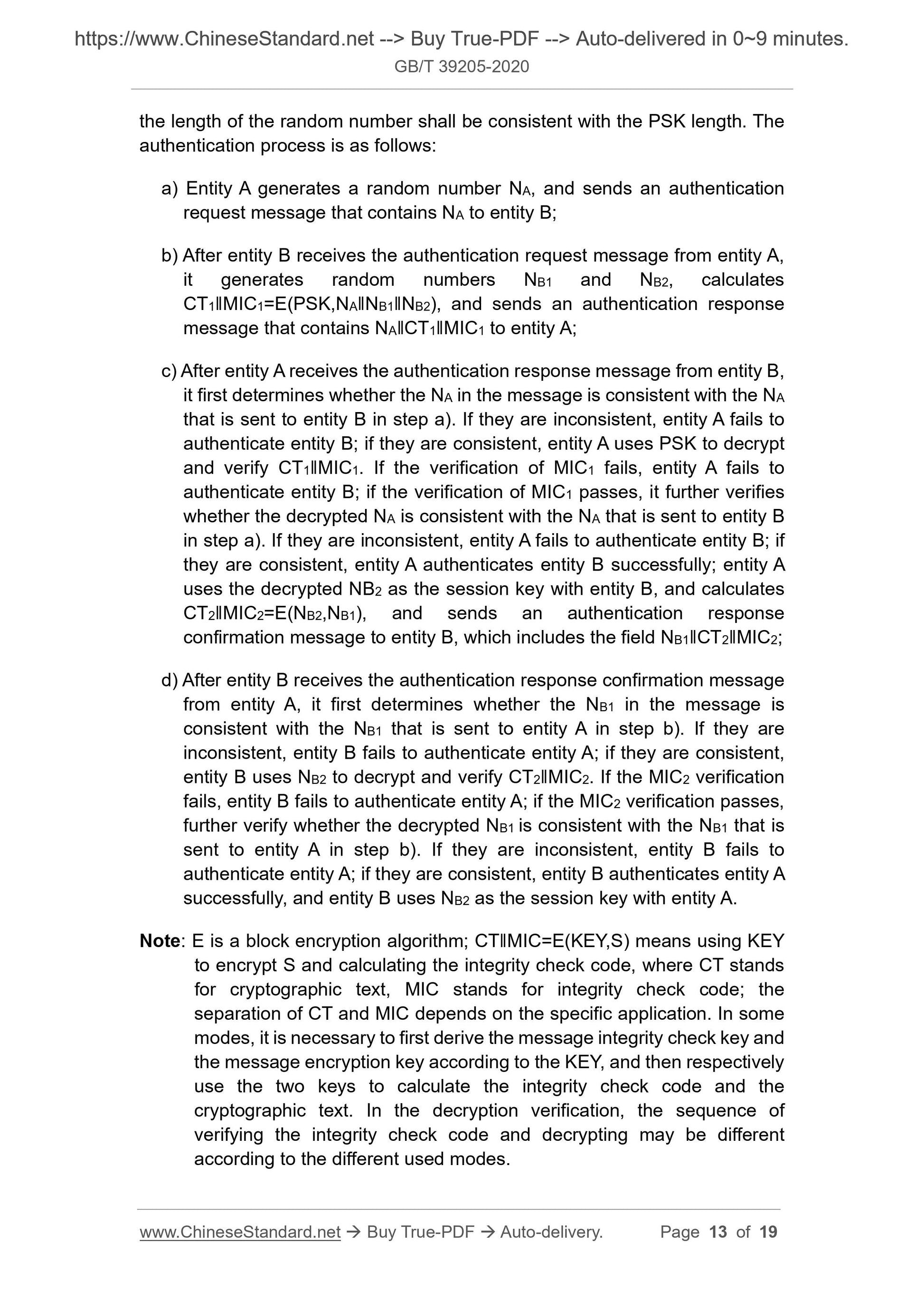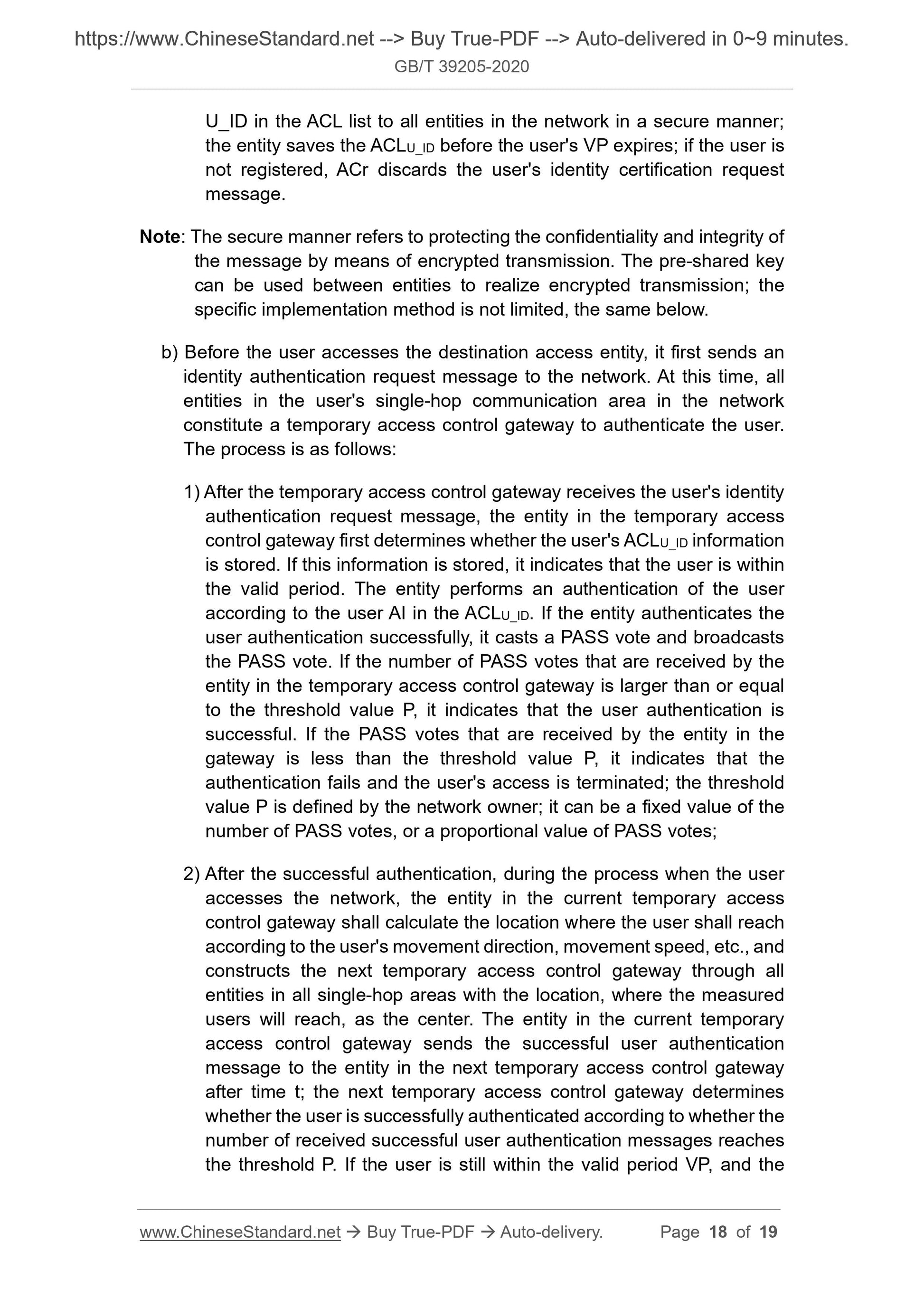1
/
of
8
www.ChineseStandard.us -- Field Test Asia Pte. Ltd.
GB/T 39205-2020 English PDF (GB/T39205-2020)
GB/T 39205-2020 English PDF (GB/T39205-2020)
Regular price
$205.00
Regular price
Sale price
$205.00
Unit price
/
per
Shipping calculated at checkout.
Couldn't load pickup availability
GB/T 39205-2020: Information security technology - Light-weight authentication and access control mechanism
Delivery: 9 seconds. Download (and Email) true-PDF + Invoice.Get Quotation: Click GB/T 39205-2020 (Self-service in 1-minute)
Newer / historical versions: GB/T 39205-2020
Preview True-PDF
Scope
This Standard specifies the light-weight authentication mechanism and theaccess control mechanism.
This Standard applies to the design, development and application of
authentication and access control mechanisms in resource-constrained
application scenarios, such as wireless sensor network, radio frequency
identification, and near field communication.
Basic Data
| Standard ID | GB/T 39205-2020 (GB/T39205-2020) |
| Description (Translated English) | Information security technology - Light-weight authentication and access control mechanism |
| Sector / Industry | National Standard (Recommended) |
| Classification of Chinese Standard | L80 |
| Classification of International Standard | 35.040 |
| Word Count Estimation | 14,148 |
| Date of Issue | 2020-10-11 |
| Date of Implementation | 2021-05-01 |
| Regulation (derived from) | National Standard Announcement No. 21 of 2020 |
| Issuing agency(ies) | State Administration for Market Regulation, China National Standardization Administration |
Share

